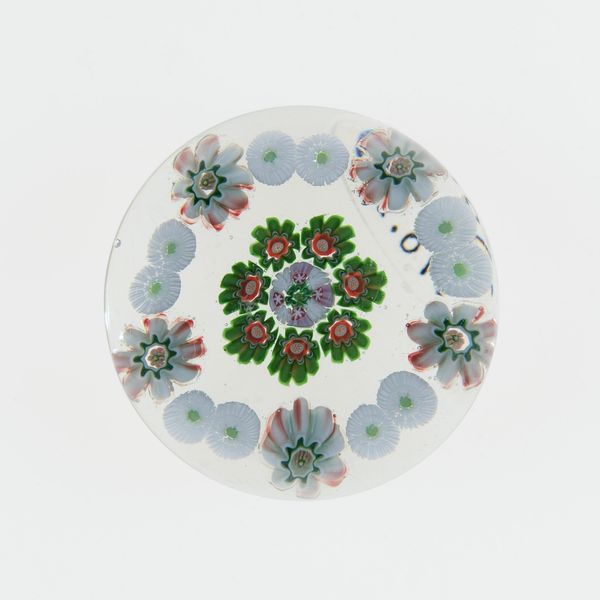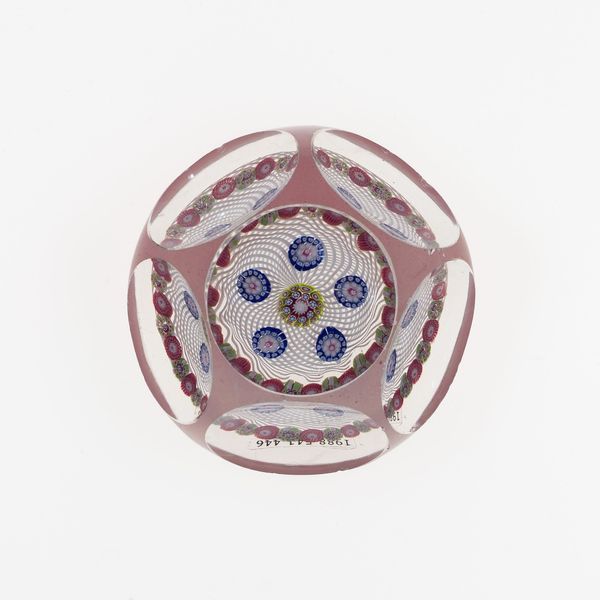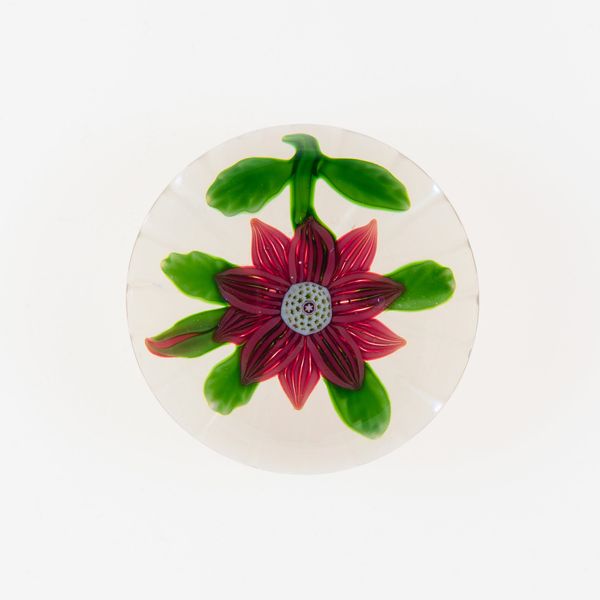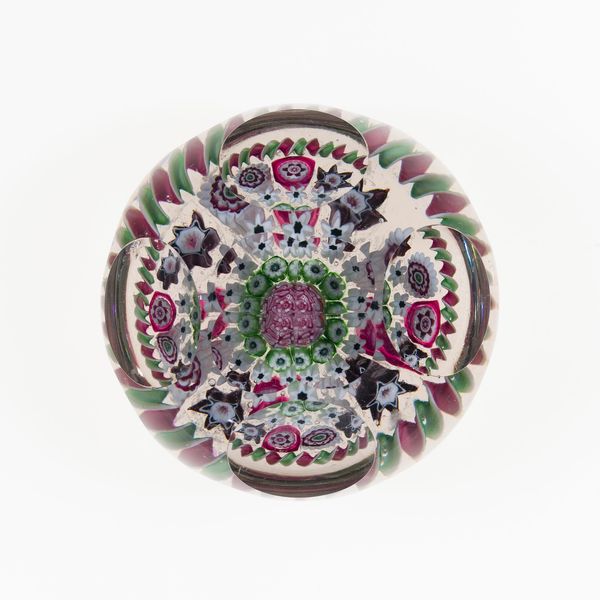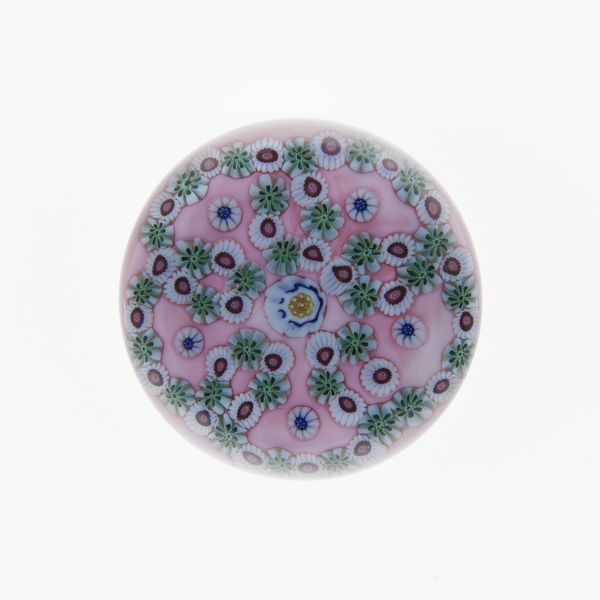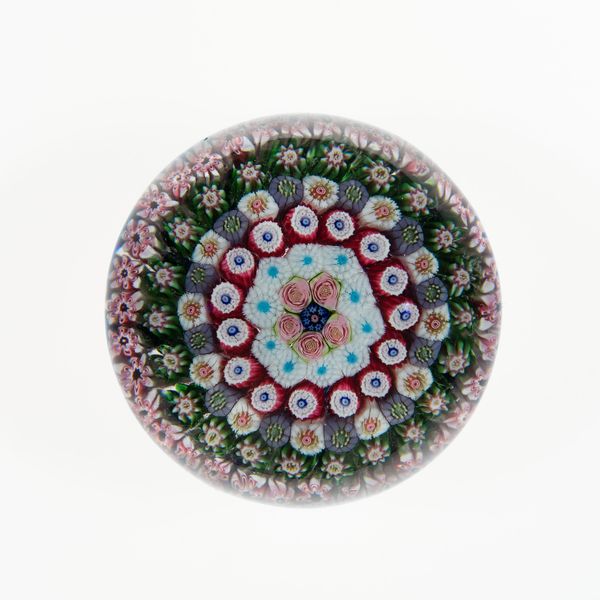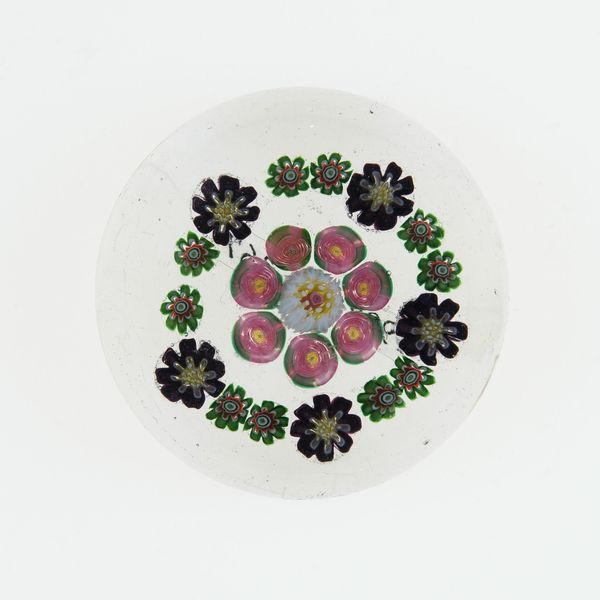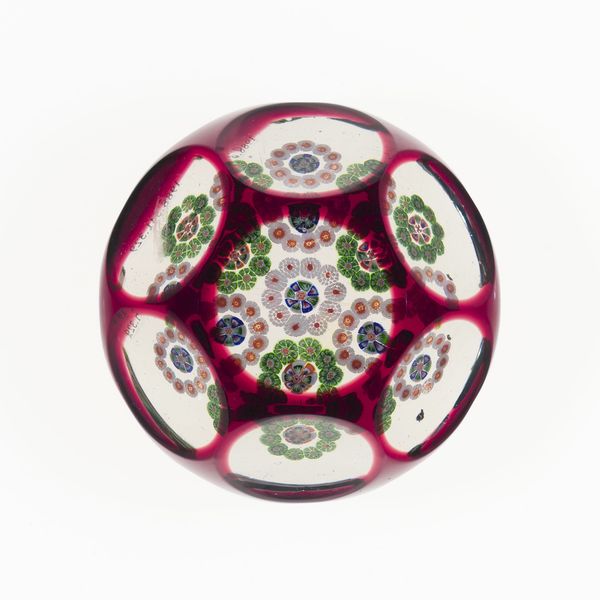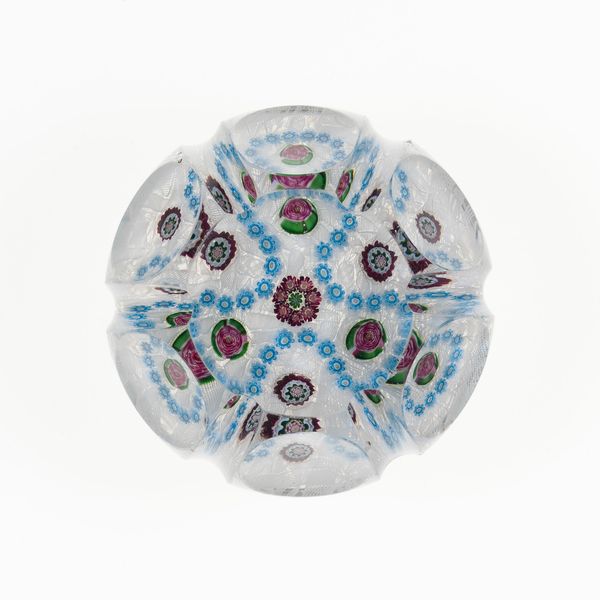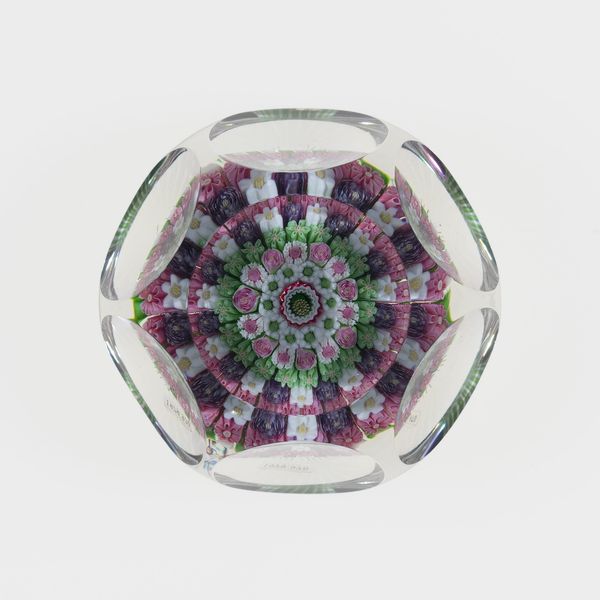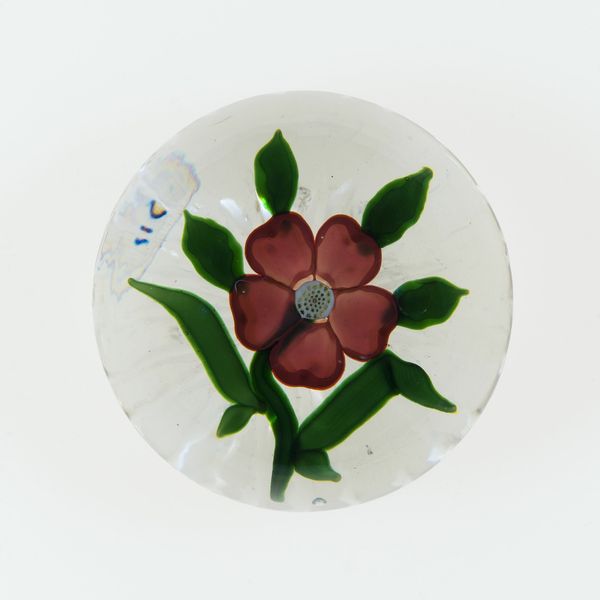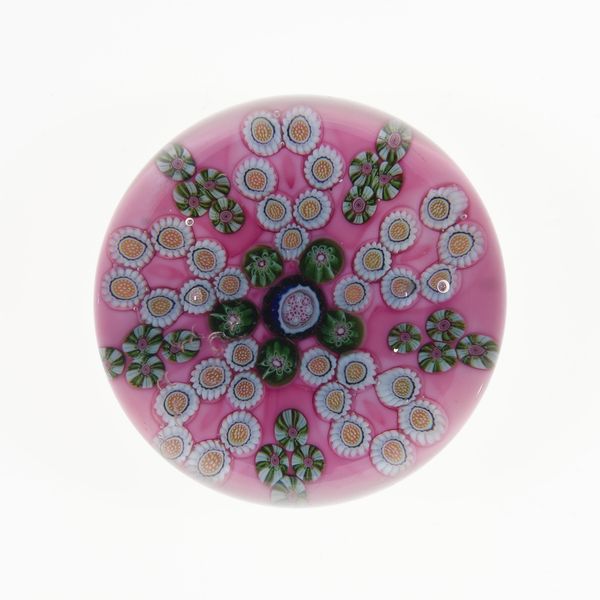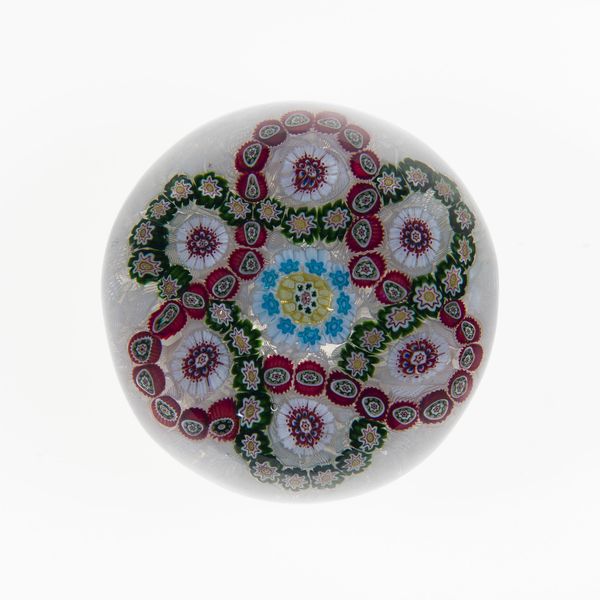
Dimensions: Diam. 4.5 cm (1 3/4 in.)
Copyright: Public Domain
Editor: Here we have a glass paperweight from the Clichy Glasshouse, probably created between 1845 and 1860. It's currently at the Art Institute of Chicago. There’s something so delicate and charming about it. How would you interpret its visual impact? Curator: The careful arrangement of these miniature glass flowers encapsulates a desire to preserve fleeting beauty, doesn't it? Glass, a fragile yet enduring material, serves as a potent symbol. Think of ancient Egyptians encasing precious objects. It also mimics nature’s transparency, capturing a moment much like a painted still life. Do the flower choices suggest any seasonal or personal significance to you? Editor: That’s interesting, I hadn’t considered the element of preservation. The flowers themselves seem quite generic, but the surrounding ring gives it almost an ethereal atmosphere... almost as if floating in liquid. Is that reading too much into it? Curator: Not at all. The circular design suggests themes of wholeness, the infinite, maybe even protection – like a miniature ecosystem encased within glass. Notice also how the radial arrangement naturally focuses the eye, compelling us to a contemplative gaze. This connects to the meditative quality of gardens, their deliberate structures offering an invitation to reflect. Editor: So it's not just pretty, it also carries a cultural memory. Fascinating how such a small object can speak volumes! Curator: Indeed. And how the cultural idea of containment plays with fragility. Perhaps they speak of beauty that can perish or must be saved. Editor: I’ll never look at a paperweight the same way again. I can see it reflecting even more complex social meanings from that period. Curator: That’s the allure of art, isn’t it?
Comments
No comments
Be the first to comment and join the conversation on the ultimate creative platform.
